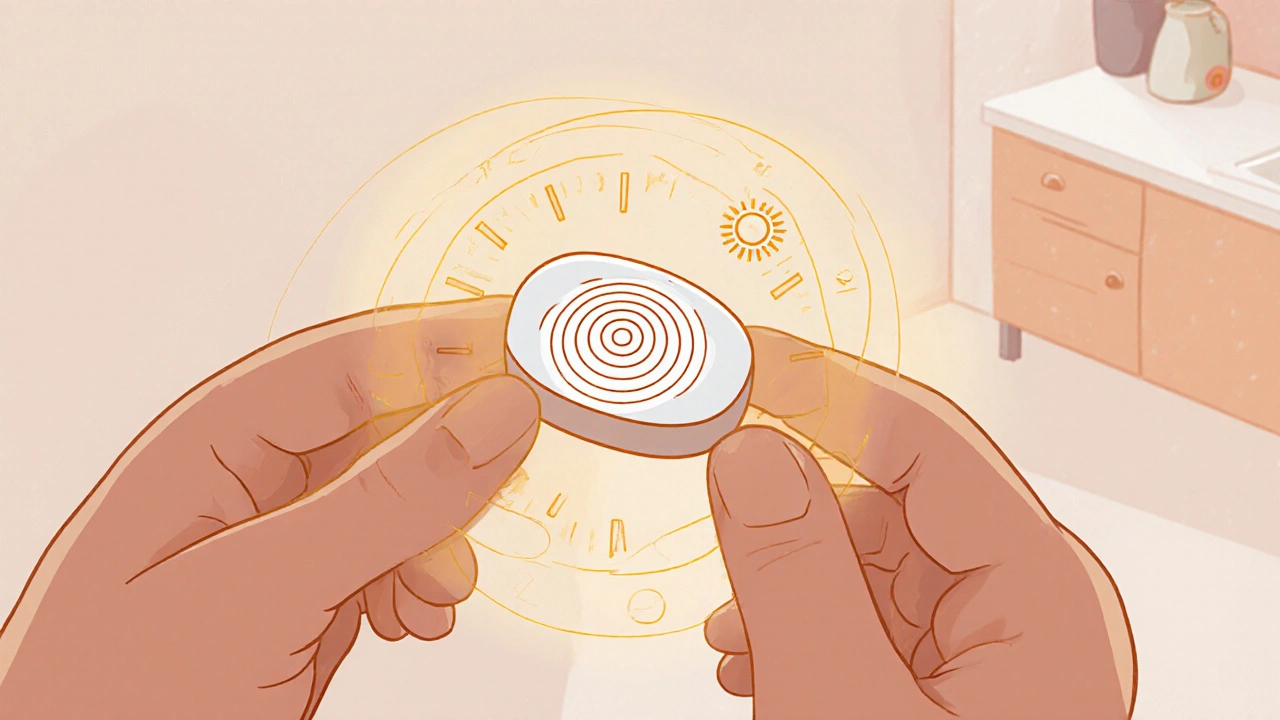Antibiotic Selection Guide
Select Your Situation
Key Takeaways
- Doxt‑SL is a controlled‑release doxycycline formulation that offers steady blood levels for up to 24 hours.
- It is most effective for acne, rosacea, and certain tick‑borne infections, but not the first choice for severe respiratory infections.
- Minocycline provides better skin penetration than doxycycline but carries a higher risk of vestibular side effects.
- Azithromycin and amoxicillin are useful for community‑acquired pneumonia, where doxycycline may be less potent.
- Choosing an alternative depends on infection type, patient age, allergy history, and tolerability.
When you hear the name Doxt‑SL is a controlled‑release doxycycline tablet designed to maintain therapeutic levels for a full day with a single dose. Its brand name highlights the "slow‑release" (SL) technology that reduces the need for twice‑daily dosing, a convenience many patients appreciate.
What Is Doxt‑SL?
Doxycycline belongs to the tetracycline class of antibiotics. It works by binding to the 30S ribosomal subunit of bacteria, blocking protein synthesis and halting bacterial growth. Doxt‑SL contains 100 mg of doxycycline hyclate in a matrix that releases the drug gradually, achieving a peak plasma concentration within 2‑3 hours and sustaining it for roughly 24 hours.
How Do It Compare With Common Alternatives?
Below is a quick‑look table that lines up Doxt‑SL against six widely used alternatives. The criteria focus on what most prescribers care about: spectrum of activity, dosing convenience, side‑effect profile, and cost.
| Antibiotic | Class | Typical Dose | Key Indications | Pros | Cons |
|---|---|---|---|---|---|
| Doxt‑SL (doxycycline) | Tetracycline | 100 mg once daily | Acne, rosacea, Lyme disease, chlamydia | Once‑daily, good tissue penetration, anti‑inflammatory | Photosensitivity, GI upset, not for pregnancy |
| Minocycline | Tetracycline | 100 mg twice daily | Severe acne, MRSA skin infections | Higher lipophilicity, excellent skin levels | Dizziness, vestibular toxicity, drug‑induced lupus |
| Tetracycline | Tetracycline | 250‑500 mg four times daily | Rickettsial diseases, acne | Cheap, broad‑spectrum | Frequent dosing, high GI irritation |
| Azithromycin | Macrolide | 500 mg once daily for 3 days | Community‑acquired pneumonia, STIs | Short course, good for patients with compliance issues | Potential QT prolongation, may induce resistance |
| Amoxicillin | Penicillin | 500 mg three times daily | Sinusitis, otitis media, urinary tract infections | Well‑tolerated, inexpensive | Allergy risk, limited for atypical organisms |
| Clindamycin | Lincosamide | 300 mg three times daily | Anaerobic infections, skin & soft‑tissue infections | Excellent for MRSA, good bone penetration | High C. difficile risk, bitter taste |
| Cephalexin | Cephalosporin | 500 mg four times daily | Skin infections, urinary tract infections | Low allergy cross‑reactivity, safe in pregnancy | Less effective against atypical pathogens, more frequent dosing |

Deep Dive Into Each Alternative
Understanding why an alternative might be chosen over Doxt‑SL helps you talk to your doctor or pharmacist with confidence.
Minocycline
Minocycline is often the go‑to when acne is stubborn. Its higher lipid solubility means it accumulates in skin and sebaceous glands more than doxycycline, which can translate into faster lesion clearance. However, the same property also explains why users sometimes feel a metallic taste or develop vertigo. A 2023 meta‑analysis of 12 trials found a 15 % higher incidence of dizziness with minocycline versus doxycycline.
Tetracycline
Older and cheaper, tetracycline still sees use in low‑resource settings. The major drawback is the need to take it every 6 hours on an empty stomach, which many patients find impractical. It also has a higher rate of esophageal irritation - about 8 % of users report burning sensations.
Azithromycin
Azithromycin’s “Z‑Pak” regimen-500 mg daily for three days-makes it popular for respiratory infections. Its long tissue half‑life (about 68 hours) means a single short course can achieve lasting bacterial suppression. Yet, for infections where doxycycline’s anti‑inflammatory action is beneficial (e.g., rosacea), azithromycin falls short.
Amoxicillin
Amoxicillin is the workhorse for sinus and ear infections. It works well against many Gram‑positive bacteria but lacks activity against intracellular organisms like Chlamydia, where doxycycline shines. Patients allergic to penicillins must avoid it, making doxycycline or a macrolide a safer bet.
Clindamycin
Clindamycin penetrates bone and abscesses effectively, which is why orthopaedic surgeons often prescribe it for osteomyelitis. It’s also one of the few agents active against MRSA skin infections. The trade‑off is a heightened risk of Clostridioides difficile colitis-studies suggest a 2‑fold increase compared with doxycycline.
Cephalexin
Cephalexin belongs to the first‑generation cephalosporins. It’s safe for pregnant women and children, a scenario where doxycycline is contraindicated. However, it doesn’t cover atypical pathogens like Mycoplasma pneumoniae, a niche where doxycycline is often chosen.
How to Choose the Right Antibiotic
Think of antibiotic selection as a decision tree. Start with the infection type, then ask:
- Is the pathogen intracellular or atypical? If yes, consider doxycycline or azithromycin.
- Is the patient pregnant or a child under 8 years? Avoid doxycycline; choose amoxicillin or cephalexin.
- Does the patient have a known allergy to penicillins? Prefer doxycycline, minocycline, or a macrolide.
- Is adherence a concern? Opt for once‑daily regimens like Doxt‑SL or azithromycin.
- Is there a high risk of C. difficile infection? Choose doxycycline over clindamycin.
When the answer points to doxycycline but dosing frequency is an issue, Doxt‑SL’s once‑daily release can be a decisive advantage.
Risks, Side Effects, and Interactions
All antibiotics carry some risk. For Doxt‑SL, the most common adverse events (reported in >10 % of users) are:
- Photosensitivity - avoid prolonged sun exposure, use sunscreen.
- Gastro‑intestinal upset - take with food if tolerated.
- Esophageal irritation - stay upright for 30 minutes after swallowing.
Serious but rare events include intracranial hypertension and liver enzyme elevation. Doxycycline also chelates with divalent cations (calcium, iron, magnesium), reducing absorption. If you’re on antacids or supplements, separate doses by at least 2 hours.
Practical Tips for Patients
- Store Doxt‑SL at room temperature, away from moisture.
- Finish the full course even if symptoms improve - stopping early fuels resistance.
- Report any severe rash, persistent nausea, or visual changes to a healthcare professional immediately.
- Ask your pharmacist about a drug‑interaction check if you’re on warfarin, oral contraceptives, or antiepileptics.
Frequently Asked Questions
Can I take Doxt‑SL with food?
Yes. Unlike immediate‑release doxycycline, the controlled‑release matrix of Doxt‑SL is less prone to binding with food. Taking it with a light meal can reduce stomach irritation without compromising absorption.
Is Doxt‑SL safe during pregnancy?
No. Doxycycline belongs to the tetracycline class, which can affect fetal bone growth and tooth discoloration. Pregnant patients should use amoxicillin, cephalexin, or a macrolide instead.
How does Doxt‑SL compare cost‑wise to generic doxycycline?
Doxt‑SL’s controlled‑release technology adds a premium - it can be 30‑40 % more expensive than standard 100 mg doxycycline tablets. However, the once‑daily dosing may reduce pharmacy visits and improve adherence, potentially offsetting the price difference.
Can I switch from immediate‑release doxycycline to Doxt‑SL mid‑treatment?
Switching is generally safe, but you should keep the total daily doxycycline dose within the recommended range (100‑200 mg). Talk to your prescriber to adjust the schedule and avoid double‑dosing.
What should I do if I miss a Doxt‑SL dose?
Take the missed tablet as soon as you remember, unless it’s almost time for the next dose. In that case, skip the missed one and resume the regular schedule - don’t double up.
Armed with the side‑by‑side facts above, you can weigh Doxt‑SL against its rivals and pick the antibiotic that fits your infection, lifestyle, and health profile best. Always discuss any change with a qualified healthcare professional.

